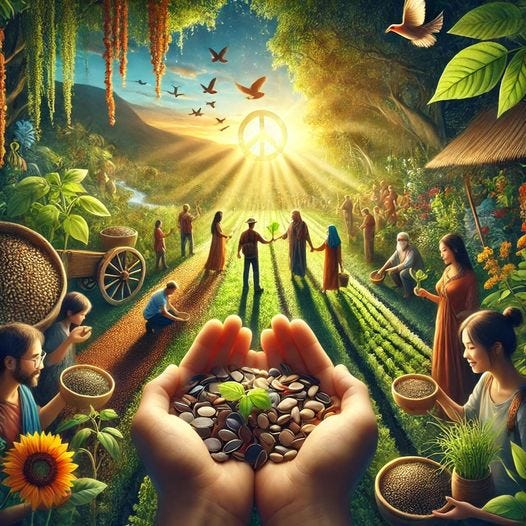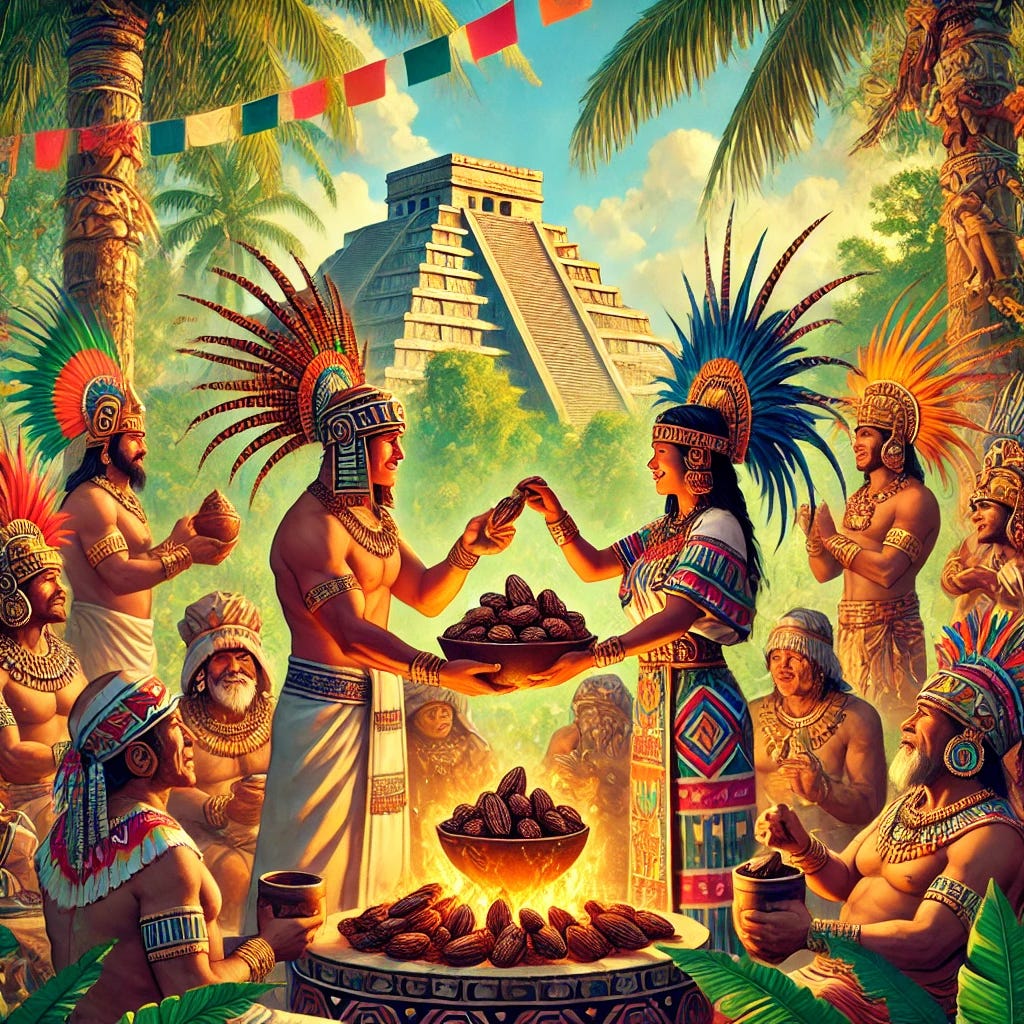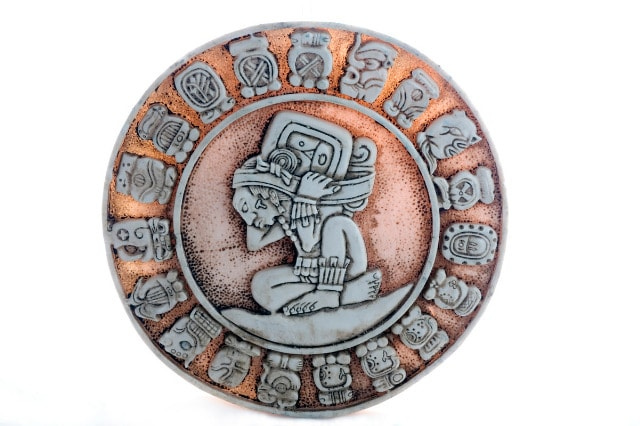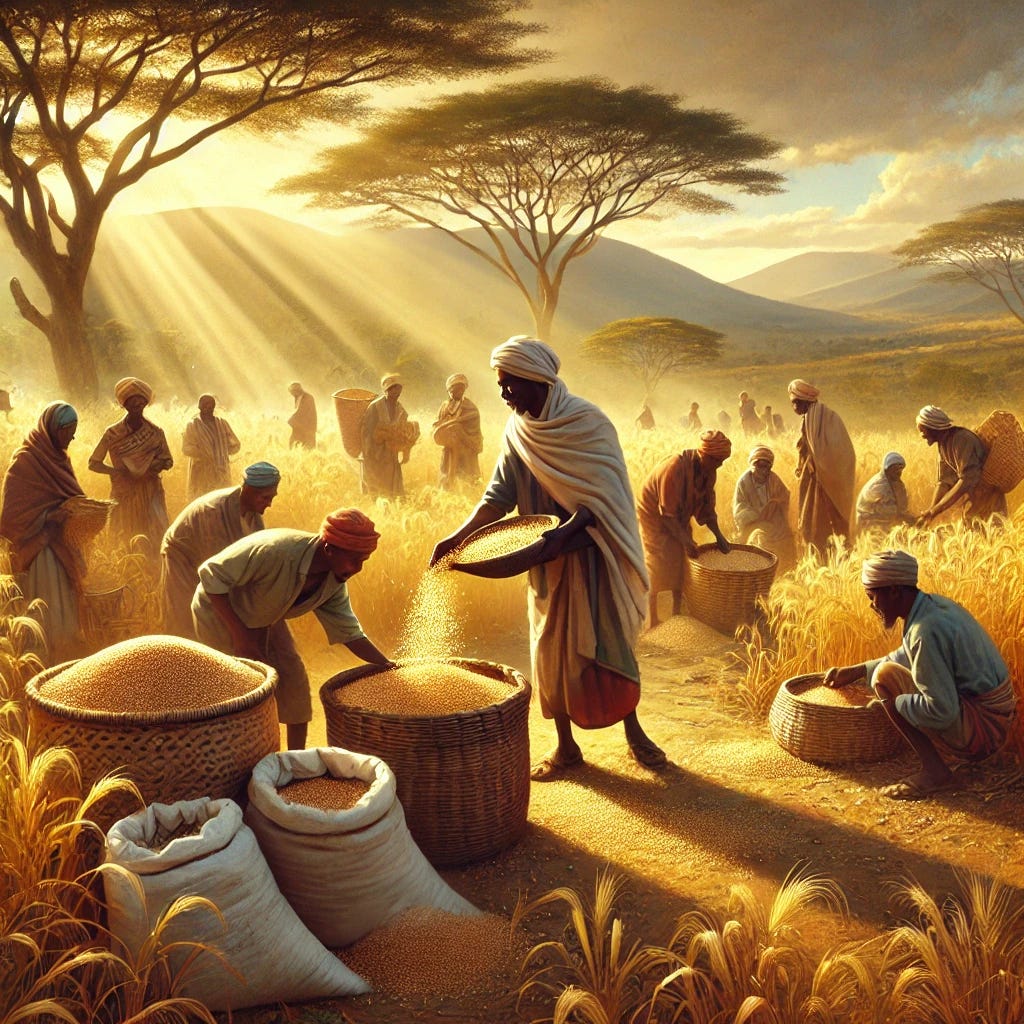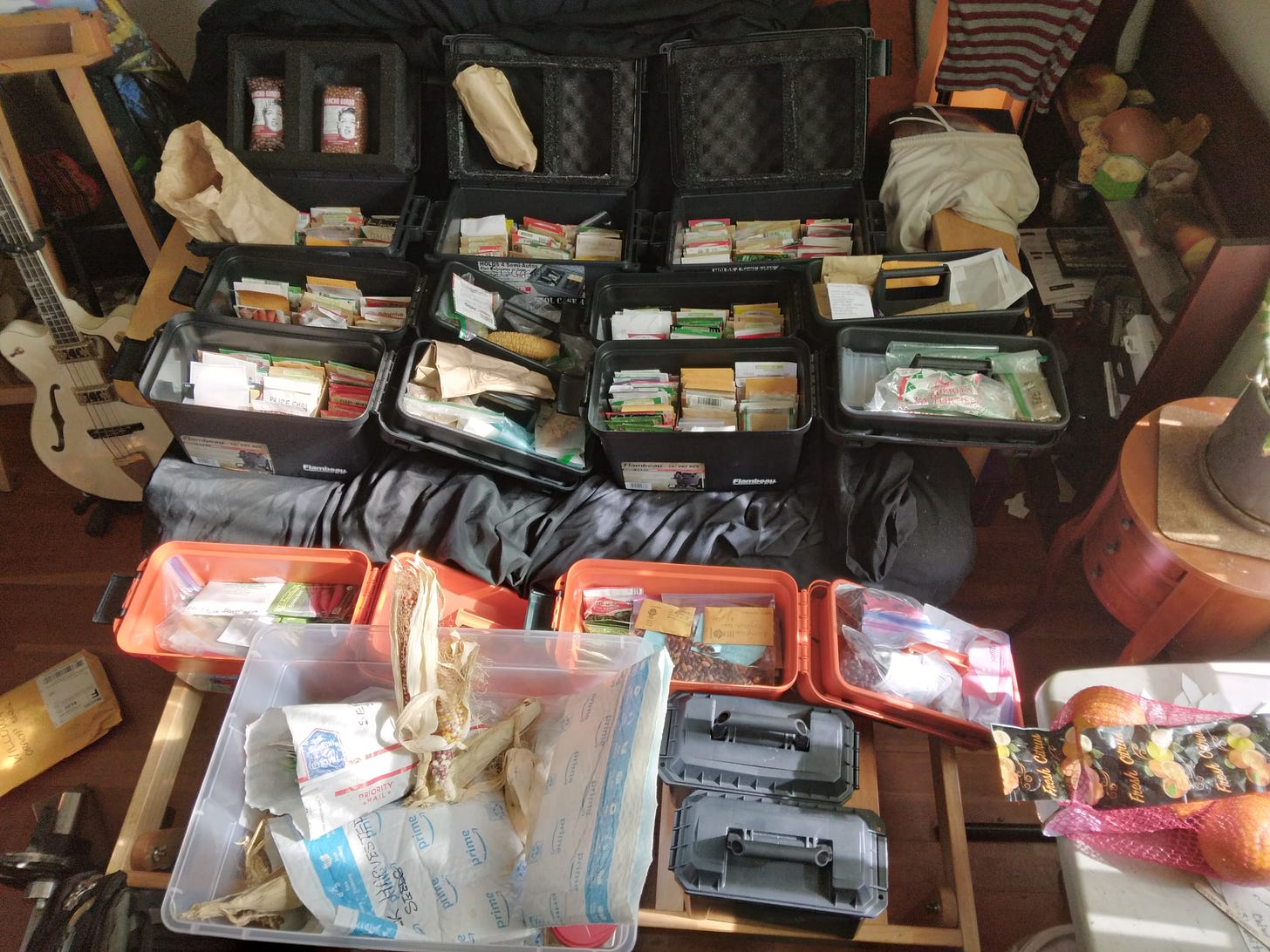Seeds of Peace As A Store Of Value
And A Medium Of Exchange
Indigenous Peoples’ Day
Today we have a day named Indigenous Peoples’ Day and one thing critical to supporting our living existence, all of us, including many forms of life are plants, which are dependent on both #seeds and spores. We wanted to commemorate this day by evolving this piece (or peace).
As we have echoed many times, our good friends in the UK, Incredible Edible Todmorden coined “If You Eat, You’re In” and with these powerful words; on we go.
Indigenous Peoples’ Day A Short Recent History
On this very important day, “Indigenous Peoples’ Day” it is good to refer back to how it came about. South Dakota became the first U.S. state to officially recognize Native American Day instead of Columbus Day in 1989, and it was celebrated starting in 1990. This change was in part due to the efforts of Lakota activist and scholar Vine Deloria Jr., along with other Native American leaders in the region. In 2021, President Joe Biden became the first U.S. president to issue a presidential proclamation recognizing Indigenous Peoples' Day as a national observance. This proclamation acknowledges the contributions and resilience of Native peoples while also addressing the injustices they have endured throughout history.
Seeds as a store-of-value or medium of exchange?
Going back over millennia we can can see many examples of #Seeds being used as a store of value and/or a medium of exchange. This was almost always regional and not long-standing, usually because something better emerged. The best example of this is precious metals and more pointedly, gold. There are fundamental differences between gold (or other precious metals) and #seeds. The most basic one is that seeds can be eaten directly, as we illustrate in this piece; in addition of course, seeds can be planted to grow plants and also produce more seeds. None of these attributes apply to gold or other precious metals. Yes this is an obvious statement and at the same time a serious one, because human beings cannot survive much beyond 3 weeks without food. And as John Lennon said “We’re Not The Only Ones” there are innumerable forms of life, on Earth, which need to eat to survive.
So we have two questions:
How can we reestablish the true value of #seeds?
How can we then use #seeds to bring the peace we sorely need on our planet? And we say “our” we mean all life-forms.
The history & possibility of Seeds as a store-of-value or medium of exchange.
While the historical record does not offer extensive, detailed reports on civilizations or tribes that used seeds as their primary medium of exchange or store of value, there are a few notable examples in anthropological and ethnobotanical studies where seeds played a significant role in the economy, either as a form of currency or as a crucial resource for barter and trade.
A wonderful illustration of a Silverback Gorilla showing power and peace in plants & seeds.
Seeds, due to their intrinsic value as the foundation of agricultural and food systems, naturally lent themselves to being valued in many societies. Here are a few examples where seeds or crops played an economic role:
1. Indigenous Tribes of North America
Some Native American tribes used seeds and crops as part of their trade and value system. Corn (maize) was not only a staple food but also carried cultural and economic significance. Among the Iroquois Confederacy, for example, corn, beans, and squash (the "Three Sisters") were crucial crops that had both spiritual and material value. Though these tribes did not necessarily use seeds as "currency" in the strictest sense, they were often involved in exchanges, alliances, and social obligations, functioning similarly to how currency operates in a broader social framework.
2. Aztec Civilization
The Aztec Empire (Mesoamerica) is often cited as one of the most prominent civilizations that used agricultural products as a medium of exchange. Cacao seeds were used as a form of currency in the Aztec economy. Cacao beans were highly valued and could be exchanged for goods, services, and labor. Considered more valuable than gold and silver, they were used as a form of currency, tribute, and dowry in marriage negotiations. Historical records suggest that the Aztecs could purchase food, clothing, and even slaves using cacao beans. While cacao seeds served as currency, the broader system of tribute and barter also included other agricultural produce. They were used as a form of currency, tribute, and dowry in marriage negotiations. The tradition of using cacao seeds in rituals and ceremonies continues to influence modern-day celebrations and festivals in Mexico and Central America.
3. Mayan Culture
Cacao seeds played a crucial role in the Mayan economy as a form of currency and tribute. Rulers demanded cacao beans as tax payments, and they were used to settle debts. The Mayans developed a creation myth involving cacao, highlighting its importance in their culture. The myth connected cacao to the creation of humanity. Cacao seeds were revered as a divine life source, connected to the Mayan gods. The Dresden Codex depicts gods associated with cacao, emphasizing its sacred nature.
4. Incan Empire
While the Inca did not have a standardized form of money in their economy, they did use a system of reciprocal labor and trade, known as "ayni" (mutual assistance). Agricultural products, including seeds of key crops like quinoa, maize, and potatoes, were often used as part of tribute to the state or in exchanges between communities. While seeds were not necessarily currency, the importance of seed stock as a store of value and security cannot be overstated in such agricultural societies.
5. Ethiopian Highlands
In parts of Ethiopia, particularly among the Oromo people, there are records of grain, particularly teff (a small seed used for making the staple food injera), being used in trade systems. While not as formalized as coinage, grains like teff, barley, and other crops were crucial in barter systems, where quantities of seed could be exchanged for other goods or labor. Seeds represented security, especially in lean times, and therefore held an inherent value beyond their immediate use in planting.
6. Papua New Guinea
The Ipomoea batatas (sweet potato) played an essential role among the highland tribes of Papua New Guinea. While not strictly "seeds," tubers of sweet potatoes were treated as a store of wealth and played a significant role in the local economy and ceremonial exchanges. In the traditional economy of some highland communities, wealth was measured by the ability to cultivate and store sweet potatoes, which could be traded or used as bride price or in social transactions.
7. Trobriand Islanders (Kula Ring)
While the Trobriand Islanders are more famous for their use of shell necklaces and armbands in the ceremonial Kula exchange, seeds and yams held considerable value within their local economy. Yams, specifically, were stored and traded as a form of wealth, and yams' seeds or tubers played an essential role in ensuring food security and social status.
Seeds as a Store of Value in Subsistence Economies
In many pre-industrial societies, seeds were not used as currency in the formalized way that coins or paper money are, but they certainly acted as a store of value, particularly in subsistence economies. In these contexts:
- Security: Seeds represented future food security, making them highly valuable for survival.
- Social Exchange: Seeds and crops were often involved in social exchanges, dowries, or offerings, adding to their economic significance.
- Barter Systems: Seeds or harvested produce from seeds were central in barter systems, particularly in agricultural societies where direct trade of goods was common.
Modern Use of Seeds in Barter Systems
In recent years, there has been a resurgence in interest in seed exchanges and seed-saving networks. These systems are more community-based, rather than formalized economies, but they show a clear understanding of the inherent value of seeds. Seed-saving communities, permaculture practitioners, and sustainable farmers now often trade seeds both for biodiversity conservation and for practical use in growing food. In a sense, seeds have regained their role as a store of value in these circles.
This is a very good article around barter and trading and the effects of fiat currency debasement overall and alternatives used over many centuries and longer.
Conclusion
While we don’t find comprehensive historical reports of a civilization that exclusively used seeds as a form of currency in the way that modern societies use money, seeds have played an important role as a store of value, particularly in agricultural and subsistence societies; subsistence societies are often viewed as “under-developed” however, we are not in agreement with these thoughts. Seeds have intrinsic value due to their ability to produce food, which is fundamental to survival, and this made them key resources in barter economies or as objects in ritualistic exchanges.
One more real “elephant in the room” is the state of most of the world’s Fiat economies and in particular the USA. As we publish this article the USA has a national debt of $35.7 trillion dollars and climbing steadily (mercurially might be a better word!). This is the US National debt clock.
Next Steps
The most important asset-commodity in using #seeds as at least a part of our value retention and exchange mechanisms are of course seeds (and not the GMO kind). For the past 6 years we been collecting and saving seeds. This was our collection 3 years ago.
Since this we have increased this by at least 50%, in addition we have steadily expanded our use of technology to aid in tracking in-flows and out-flows and also seed viability over time. This short video shows our Web2 based database system, to give you an insight into what we are doing. As time passes our use of beneficial technologies will expand.
So we have the #seeds and this just keeps growing, the next steps are to build out our systems to create store of value and value exchange mechanisms. More news on this soon and thanks as always for your attention.



